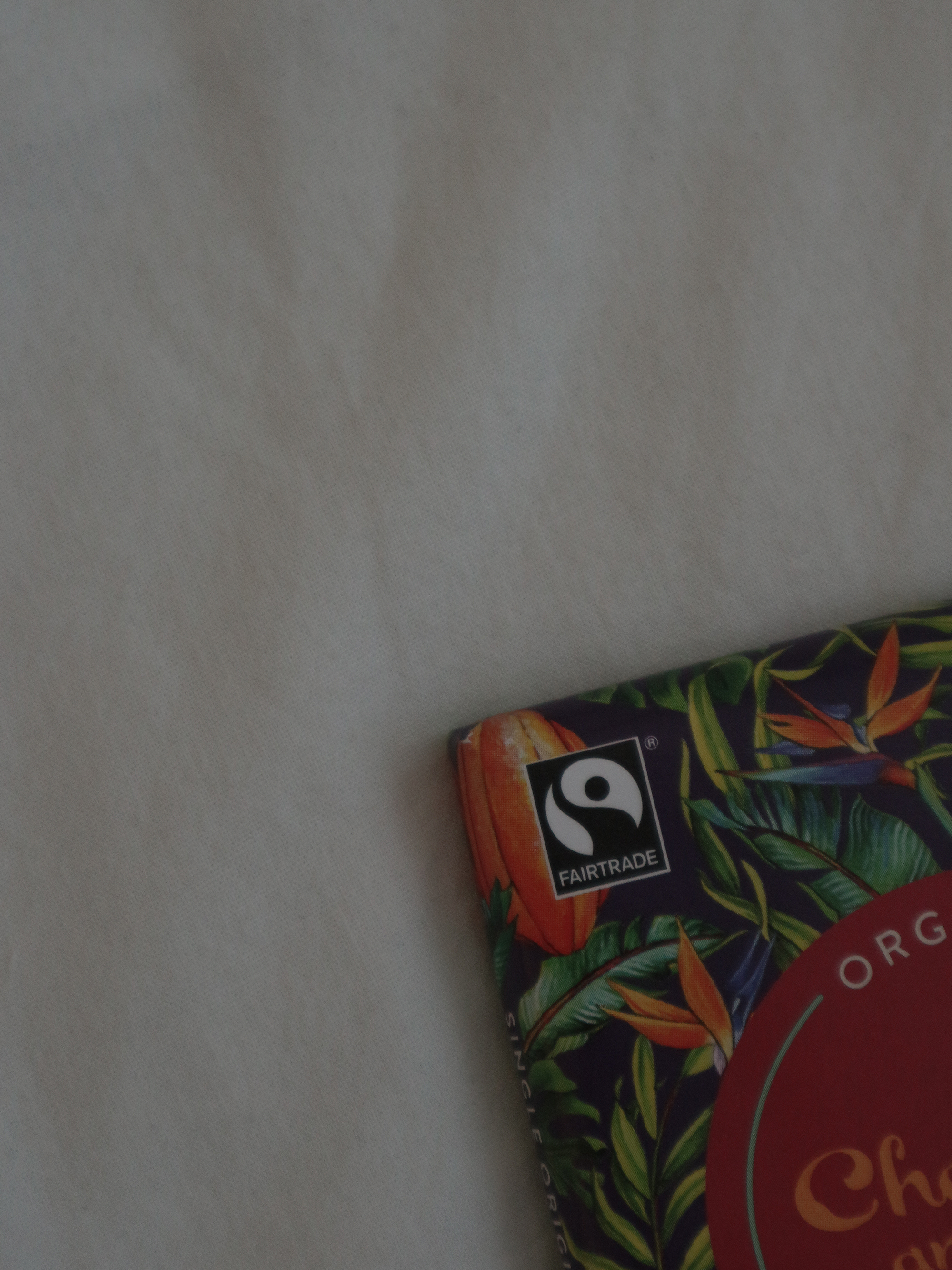
One of the topics I want to talk about on this blog is cruelty-free. I was pleased that you were interested, too – firstly, because I am delighted that more and more people are becoming aware of the importance of this label, but it is also something that I am very excited about and I am glad I can share it with you.
The term cruelty-free simply generally refers to products and brands that do not test on animals. For the first time it was used in 1959 by Lady Dowding, who persuaded producers of fake fur to mark their products with “Beauty Without Cruelty“, and in 1963 she founded a charity with the same name.
In today’s article I will be talking about testing on animals – and mostly why it is something that doesn’t belong in twenty-first century.

Cruel
Whole life in a cage – this is the reality for over 115 million animals. Rabbits, guinea pigs, mice, rats, cats, dogs (yes, dogs too), monkeys, sheep and even fish are kept in captivity and used as a tool for testing cosmetics, cleaning products, food additives, pesticides, and drugs. Every second, three innocent creatures die.
Although the fact, that many companies are testing animals, is not a secret, I did not know what does this testing even look like. But it is much worse than what I had imagined.
They have to shave the animal’s fur to have direct access to the skin, which makes it easier to apply the chemicals. They force them to inhale toxic substances, keep them immobilized for several hours, drill holes in their skull, burn their skin, crush the spinal cord. The number of animals at the end of this brutal process is killed by closing them into a chamber into which the killing gas flows, decapitation, spinal fracture or brain irradiation.
Millions of animals are kept alive in a miniature cage, where they are waiting for death in pain. If the substance that they forced them to eat turns out to be toxic, there is no way back.
Unreliable
Between the 1950s and 1960s, Contergan’s affair took place – a drug Thalidomide was tested to be safe, and it was given as a calming medication for pregnant women to help with morning sickness. However, more than 100,000 children were born without hands, feet or ears; with problems with eyes, face, organs, femoral and tibial bone. Up to 40% of children died in their first year of life.
People and animals are by no means the same – and the fact that some kind of animal does not get hurt does not mean it does not cause any reaction in humans. According to Cruelty-Free International, up to 95% of the substances failed in human tests despite promising results in animal testing; and allergenic test results on guinea pigs can estimate human responses to potentially dangerous substances to only 72%, while a combination of more modern methods based on real human cells and tissues is accurate to 90%.
Outdated
The first animal tests were carried out in ancient Greece in the 4th century BC, but in 1938, when more than 100 people died after the ingestion of elixir sulfanilamide, a law was passed in the United States that commissioned animal testing in an attempt to prevent death caused by a harmful substance.
But since than, eighty years have passed. And there are more modern ways to test substances and ingredients.
Unnecessary
Testing on animals is not necessary whatsoever – and you do not have to worry about getting a substance that will hurt you. There are over 7,000 ingredients that have been shown to be safe, but there are alternative options that are often faster, cheaper and more effective.
A popular method is a cell culture. Since most human cells are able to live in the lab, scientists have been using cell cultures for a long time to mimic the role of organs in research of cancer or AIDS. However, the actual human tissues of volunteers (donated after cosmetic surgery or biopsy) are also used, or volunteers are directly involved in the tests. On the one hand, this may seem cruel, but the companies are more cautious – and in return they have more reliable results.

Not enough
Since 2004, there is a law in the European Union under which no cosmetic products can be tested on animals and since March 2013 it is forbidden to test not only products but also individual ingredients on animals and to sell cosmetics that have been tested after that date on animals outside the EU. This law looks great and it seems that the problem is completely solved, but it has several holes:
- it forbids only testing on vertebrates,
- it refers only to the cosmetic ingredients only – so if a substance is also used in detergents or drugs, it may be tested (sometimes animal testing isrequired),
- there is no control organ in charge of supervising compliance with this law,
- it is only the European Union – and 80% of the world’s countries are still testing on animals.
There are companies that don’t test on animals, but they do not (and can not) have a label as cruelty-free. That’s because they sell their products in China where animal testing is required. And the manufacturer who wants to sell on the Chinese market must pay a company to test the products on the animals. Although this seems to be in jeopardy with the law (according to which cosmetics that have been tested on animals after 2013 cannot be sold in the EU), the EU doesn’t have a problem with it because the law permits testing in order to sell – if it was proven, that the results are used to develop new products, then it’d be a violation of the law.
There are many brands and products on the market that do not test animals, have HCS certificates and rabbit labels. You have the choice to choose whether or not to support testing on innocent creatures.
And by the time you read this article, more than 1,000 animals died.

Jedna z tém, ktorej sa chcem venovať na tomto blogu, je cruelty-free. Potešilo ma, že to aj vo vás vzbudilo záujem – jednak preto, lebo som nadšená, že si čoraz viac a viac ľudí uvedomuje dôležitosť tohto označenia, no taktiež je to niečo, čo veľmi nadchlo aj mňa a som rada, že sa o to s vami môžem podeliť.
Termín cruelty-free všeobecne a zjednodušene označuje produkty a značky, ktoré netestujú na zvieratách. Prvýkrát bol použitý v roku 1959 Lady Dowding, ktorá presvedčila výrobcov falošných kožušín, aby označili svoje produkty “Beauty Without Cruelty“, a v roku 1963 roku založila rovnomennú charitu.
V dnešnom článku sa budem venovať testovaniu na zvieratách – a hlavne, prečo je to niečo, čo nepatrí do dvadsiateho prvého storočia.

Kruté
Celý život v klietke – toto je realita pre viac ako 115 miliónov zvierat. Králiky, morčatá, myši, potkany, ale aj mačky, psy (áno, aj psy), opice, ovce a dokonca aj ryby sú držané v zajatí a používané na testovanie kozmetiky, čistiacich produktov, potravinárskych prídavných látok, pesticídov a liekov. Každú sekundu umrú tri nevinné tvory.
Hoci to, že mnohé spoločnosti testujú na zvieratách, nie je žiadne tajomstvo, ani ja som si až do nedávna nevedela, ako také testovanie vôbec vyzerá. No je to oveľa horšie než moje predstavy.
Zvieratám musia oholiť srsť, aby mali priamy prístup k pokožke, na ktorú im potom môžu jednoduchšie aplikovať chemikálie. Nútia ich vdychovať toxické látky, v prístrojoch ich držia imobilizované aj niekoľko hodín, vyvŕtajú im otvory do lebky, pália im pokožku, rozdrvujú miechu. Množstvo zvierat na konci tohto brutálneho procesu usmrtia zatvorením do komory, do ktorej vpustia usmrcovací plyn; dekapitáciou (teda odťatím hlavy), zlomením chrbtice alebo ožarovaním mozgu.
Milióny zvierat sú celý život zatvorené v miniatúrnej klietke, kde v bolestiach priam čakajú na smrť. Ak látka, ktorú ich donútili požiť, sa ukáže byť toxická, už nie je cesty späť.
Nespoľahlivé
Na prelome päťdesiatych a šesťdesiatych rokov prebiehala Conterganova aféra – na zvieratách bola testovaná látka Talidomid, ktorá sa ukázala ako nezávadná, a bola podávaná ako upokojujúca látka pre tehotné ženy, ktorá mala pomôcť s rannou nevoľnosťou. Avšak viac ako 100 000 detí sa narodilo bez rúk, nôh alebo uší, s poruchami očí, tváre, orgánov, stehennej a holennej kosti. Až 40% detí umrelo do prvého roku života.
Ľudia a zvieratá nie sú ani náhodou identické – a to, že nejaká látka zvieraťu nijako neuškodila neznamená, že nevyvolá žiadnu reakciu u človeka. Podľa Cruelty-Free International, až 95 % látok zlyhalo na testoch na ľuďoch napriek sľubným výsledkom pri testoch na zvieratách a alergénne výsledky z testovania na morčatách vedia odhadnúť ľudské reakcie na potenciálne nebezpečné látky len na 72 %, zatiaľ čo kombinácia modernejších metód založená na testovaní na skutočných ľudských bunkách a tkanivách je presná až na 90%.
Zastarané
Prvé testovania na zvieratách boli uskutočnené už v starovekom Grécku v 4. storočí pred našim letopočtom, no až v roku 1938, keď viac ako 100 ľudí umrelo po požití látky elixir sulfanilamide, bol v Spojených štátoch schválený zákon, ktorý prikazoval testovanie na zvieratách v snahe predísť smrti spôsobenej škodlivou látkou.
No odvtedy už prešlo osemdesiat rokov. A existujú modernejšie spôsoby, ako testovať látky a zložky.
Zbytočné
Testovanie na zvieratách však nie je vôbec nevyhnutné – a nemusíte sa obávať, že by sa k vám dostala látka, ktorá vám nejako ublíži. Existuje cez 7 000 ingrediencií, pri ktorých bolo preukázané, že sú bezpečné, no sú alternatívne možnosti, ktoré sú často rýchlejšie, lacnejšie a efektívnejšie.
Populárnou metódou sú bunkové kultúry. Keďže väčšina ľudských buniek dokáže žiť v laboratóriu, vedci už dlhšie používajú bunkové kultúry, ktoré napodobňujú funkciu orgánov na výskumy rakoviny či AIDS. No využívajú sa aj skutočné ľudské tkanivá dobrovoľníkov (darované po kozmetických operáciách alebo biopsiou, teda odberom tkaniva) alebo sa dobrovoľníci priamo zúčastňujú na testovaniach. Na jednu stranu sa tento spôsob môže zdať byť krutý, no spoločnosti sú vďaka tomu oveľa opatrnejšie – a na oplátku majú spoľahlivejšie výsledky.

Nedostatočné
Od roku 2004 platí v Európskej únii zákon, podľa ktorého nesmú byť na zvieratách testované kozmetické produkty, a od marca 2013 je na zvieratách zakázané testovať nielen produkty, ale aj jednotlivé zložky, a predávať kozmetiku, ktorá bola po tomto dátume testovaná na zvieratách mimo EÚ. Tento zákon možno vyzerá super a zdá sa, že problém je úplne vyriešený, no má viacero dier:
- zakazuje len testovanie na stavovcoch,
- vzťahuje sa len na vyslovene kozmetické zložky – teda ak sa nejaká látka používa aj v čistiacich prostriedkoch alebo liekoch, testovať sa môže (niekedy sa testovanie vyžaduje),
- neexistuje žiaden kontrolný orgán, ktorý by mal na starosti dohľad nad dodržiavaním tohto zákona,
- týka sa len Európskej únie – a 80% krajín sveta stále na zvieratách testuje.
Sú značky, ktoré na zvieratách netestujú, ale predsa nemajú (a ani nemôžu) mať označenie cruelty-free. A to preto, že svoje produkty predávajú v Číne, kde je testovanie vyžadované. A výrobca, ktorý chce ponúkať aj na čínskom trhu, musí platiť firme, ktorá produkty na zvieratách otestuje. Hoci sa to naoko bije so zákonom (podľa ktorého na európsky trh nesmie byť dodávaná kozmetika, ktorá bola po roku 2013 testovaná na zvieratách), EÚ s tým nemá problém, pretože zákon povoľuje testovanie za účelom predávania na danom trhu – keby sa dokázalo, že výsledky testovaní značka využíva na vývoj nových produktov, až vtedy by šlo o porušenie zákona.
Na trhu je množstvo značiek a produktov, ktoré na zvieratách netestujú, majú certifikáty HCS a označenia s králikmi. Máte možnosť si vybrať a zvoliť, či budete podporovať testovanie na nevinných tvoroch alebo nie.
A pokiaľ ste dočítali tento článok, umrelo viac ako 1 000 zvierat.





